Hall Middle-aged Scholar Village
 Experience Guide
Experience Guide
"Protect Gochang!"
In the year 930 AD, a decisive battle unfolded in Gochang (now located in Andong, Gyeongsangbuk-do) between Wang Geon of Goryeo and Gyeon Hwon of Later Baekje (Silla). This battle, known as the Battle of Gochang, effectively determined the ultimate victor of the Later Three Kingdoms era. Would you like to step into the scene of the Battle of Gochang, where the loyalty of scholars shone brightly?
 Exhibition Guide
Exhibition Guide
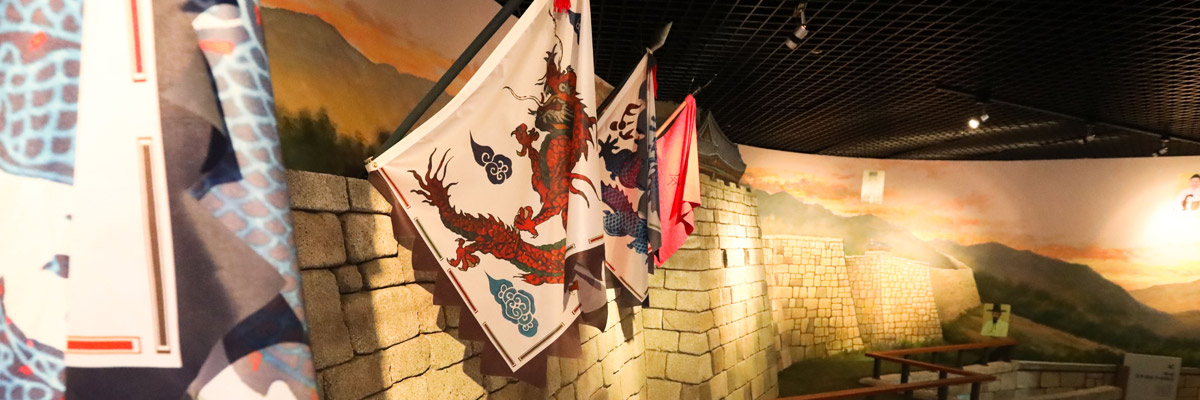
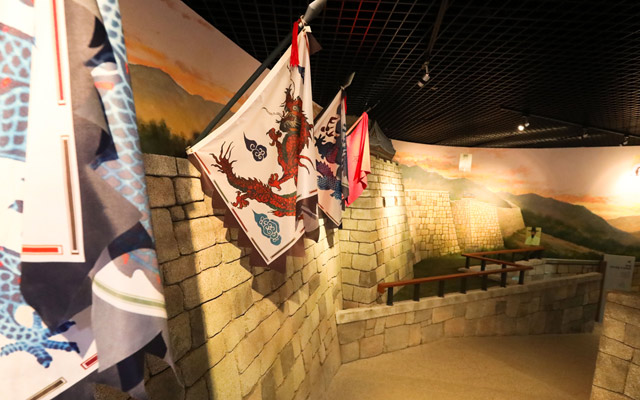
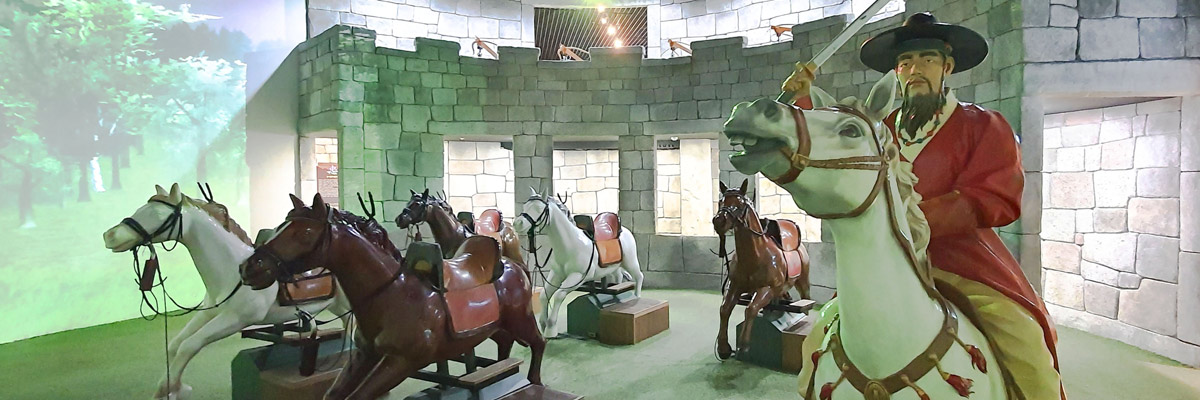
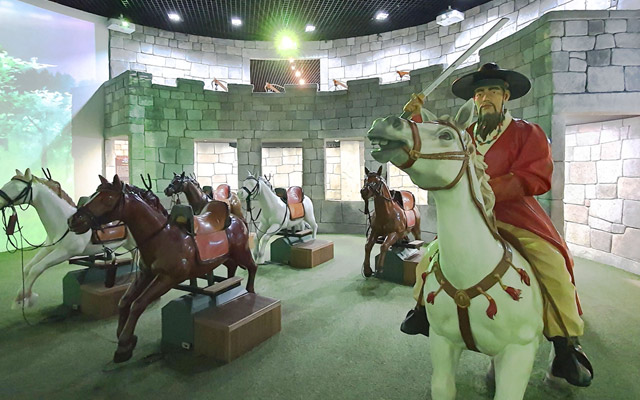
 Subject
Subject
Defend the Jinju Castle
- Defend the Gochang
- Firing the Cannons
- Heroes of the Jinju Castle
- Charge! Make a Surprise Attack on the Japanese Soldiers
- Building the Castle Walls
Defend the Gochang
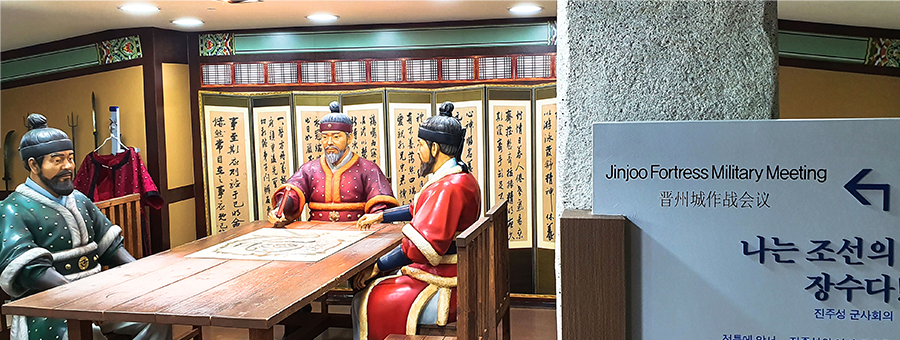
Period: 929 - 930 AD
Location: Gochang (Downtown Andong City)
Belligerents: Goryeo (Attacking), Victory | Unified Silla-Later Baekje (Defending), Defeat
Outcome: Victory for Goryeo
Impact: Goryeo establishes dominance in the Later Three Kingdoms, decline of Unified Silla-Later Baekje
Following the Battle of Gochang, Goryeo renamed Gochang to Andong, signifying the pacification of the eastern region (Dong, representing Silla). Despite the name similarity, it has no connection with Gochang County in Jeollabuk-do. The characters are different, and that area belonged entirely to the central region of Later Baekje, Wan San Ju.
Recognizing the strategic importance of Andong in Goryeo's recovery, it was granted the status of one of the Four Great Capitals (Gyeong) following Gaegyeong (Kaesong), Seogyeong (Pyongyang), Donggyeong (Gyeongju), and Namgyeong (Seoul) during the Goryeo Dynasty. This designation continued into the Joseon era, and until the proclamation of the Korean Empire in 1897, Andong maintained its status as one of the Four Great Capitals for an impressive 960 years.
Firing the Cannons
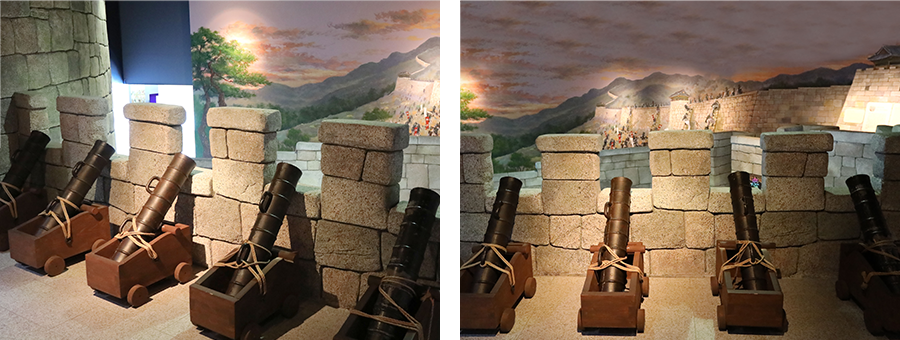
Heroes of the Gochang
| Wang Geon |
In the year 918, King Wang Geon, born in Kaesong, established a dynasty that ruled for 474 years, unifying the Later Three Kingdoms in 936 and enduring until its collapse in 1392. Throughout this period, a total of 34 kings from the royal lineage governed the kingdom. The victory achieved by Wang Geon in this battle is attributed to the active collaboration of the local aristocracy in the Gochang region, known as the "재지호족" (local elite). The Battle of Gochang aimed to secure the ultimate leadership for the reunification of the Korean Peninsula, leading to the gradual collapse of the defeated Later Baekje. |
|---|---|
| Kim Sun Pyeong | During the Goryeo era, military figures such as Daegwang and Abo played significant roles. Daegwang, originally from Andong, rose to prominence in 930 (13th year of King Taejo's reign) during the conflict between Taejo and Gyeon Hwon. He, along with Kwon Haeng and Jang Gil, assisted Taejo and was appointed to the position of Daegwang. Later, he advanced to the position of Abo. |
| Gweon Hang |
In the Goryeo era, the Andong clan, a noble lineage, made notable contributions during the Battle of Gochang, supporting the Goryeo forces. Recognized for their achievements, they were granted the Kwon family name by King Taejo. The progenitor of the Andong clan is documented in the "Goryeo-sa" as "Haeng (行)," with the family name recorded as Kim. In the year 930 (13th year of King Taejo's reign), during the siege of Gochang by Gyeon Hwon of Later Baekje, the Goryeo forces faced a challenging situation. However, following Yu Geum-pil's proposal, they launched a counterattack and achieved a significant victory. This triumph was possible due to effective cooperation from local aristocrats in the Gochang region. In recognition of their contribution, King Taejo designated Andong as the ancestral seat and bestowed the title of "Daesang (大相)" upon them. Historical records, such as "Jeungbo Munheon Bigo," even mention their designation as "Samhan Byeoksang Gongshin Samjung Daegwang Taesa Abo (三韓壁上功臣三重大匡太師亞父)." |
Charge In! Join the Battle!
Experience the thrill of defeating Gyeon Hwon's forces by riding model electronic arrows and moving horses.
Gyeon Hwon's soldiers are advancing towards Gochang, and it's time for us to assist Wang Geon in repelling them.
-
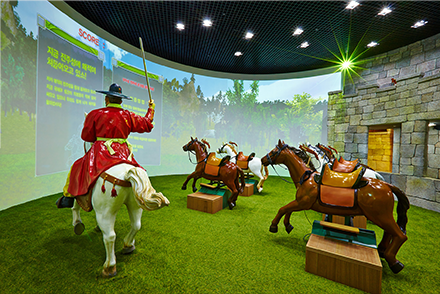 STEP. 01 Let’s get on the horses and put on the seat belt.
STEP. 01 Let’s get on the horses and put on the seat belt. -
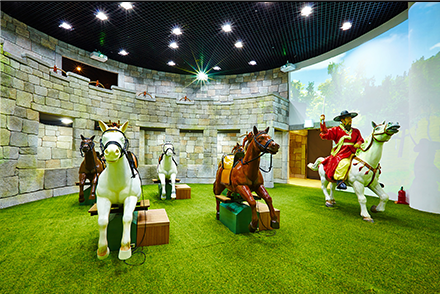 STEP. 02 When it begins hold the crossbow and fire the lights to attack the enemies.
STEP. 02 When it begins hold the crossbow and fire the lights to attack the enemies. -
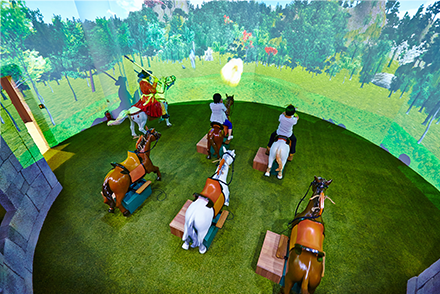 STEP. 03 You should not release the seat belt or get off the horse in the middle of the experience.
STEP. 03 You should not release the seat belt or get off the horse in the middle of the experience.
Restore the Battlefield!
Let's protect our village that has been reduced to ruins by the onslaught of Gyeon Hwon's attack.
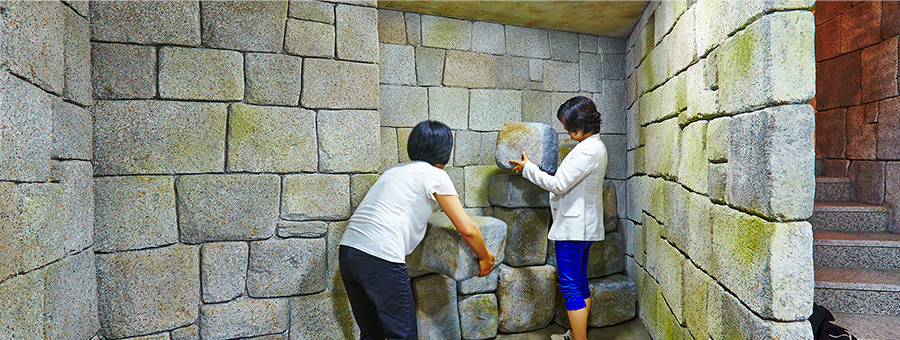
Everyone!
Our village has been turned into ruins due to Gyeon Hwon's assault.
Grab a mortar stone and quickly repair the damaged areas to safeguard Gochang. Join us in preserving the heritage of this historic battleground!
State which was Run by Chosun’s Scholars
- State which was Run by Chosun’s Scholars
- Beat the Sinmungo
- Understanding the Government office
- What is Chung(忠)?
What is Ui(義)?
State which was Run by Chosun’s Scholars
Since the king is at the highest position of a state, can he do everything the way he wants? No! Regardless of the greatness of king Sejong, if there were no Jibheonjeon scholars, then how could Hanguel have been created? Also, if the servants were to unconditionally succumb to tyrants like Yeonsangun the nation’s prospects would be disastrous. Therefore a system where the king is at the center while being surrounded with the scholars’ wisdom was in place to run the state. Then, let’s see how the scholars actually ran the state.
Beat the Sinmungo
It is a drum placed on top of the Munru(In 1401 outside the palace in 1401 (Chosun Dynasty Taejong 1), to solve the woes of the civilians.
Although there was a legal system of appeals and denunciations at the beginning of Chosun, the state installed the Sinmungo as a facility for final appeals and direct denunciations. The facility was overseen by Uigeumbu Dangjikcheong which was a direct deputy of the king, and when the king heard the sound of the drums he could receive the submittal of the woe of the plaintiff.
In other words, if there were any appeals to be made, they were reported to Jujanggwan in Seoul and to Saheonbu in provincial areas, and for cases that were not able to be solved in these places, they would be passed on to beat the Sinmungo.
Understanding the Government office
| Parliamentary Department, Uijeongbu | Highest institution that decides on the policy. The Yeonguijeong(parliament and the Left-right Uijeong(parliament) would discuss about a matter and receive approval from the king to deliver to Yukjo. |
|---|---|
| Yukjo (六曹) |
Administrative department that oversaw the state’s political affairs Yijo(吏曹) : Administrative Personnel Hojo(戶曹) : Finance Affairs Yejo(禮曹) : Ceremony, Education, Foreign Diplomacy Byeongjo(兵曹) : National Defense Hyeongjo(刑曹) : Judicial Affair Gongjo(工曹) : Construction & Other Projects |
| Seungjeong -won(承政院) |
King’s Private Secretary Office |
| Samsa (三司) |
Hongmungwan(弘文館) : King’s advisory institution Saganwon(司諫院) : Criticized the wrong politics of the King Saheonbu(司憲府) : Institution that inspected the government officials |
| Uigeumbu (義禁府) |
Judicial institution directly under the king |
| Podocheong (捕盜廳) |
Arrest & punished criminals |
| Chunchugwan (春秋館) |
History editing institution |
What is Chung(忠)? What is Ui(義)?
What is Chung(忠)?The character ‘Chung(忠)’ is composed of middle,’Jung(中)’ and heart, ‘Sim’. It means ‘sincere feeling of the inside’, or ‘equal mind that does not tilt to one side’. A person who has the mind of Chung is honest, sincere and trustworthy. Such people pour in sincerity when they deal with other people or matters . Moreover, being able to sacrifice oneself to do the right thing is called chungui(devotion).
What is Ui(義)?The character, ‘Ui(義)’, is a composed of ‘Yang(羊)’ and ‘Ah(我)’. Wearing a great leather clothing(羊) and having oneself neat represents appropriate attitude and behavior. Moreover, the character also means that one should be able to sacrifice him/herself. In other words, it means to refrain from all personal benefits and to keep the principles in order to protect everyone. It is like social justice.

